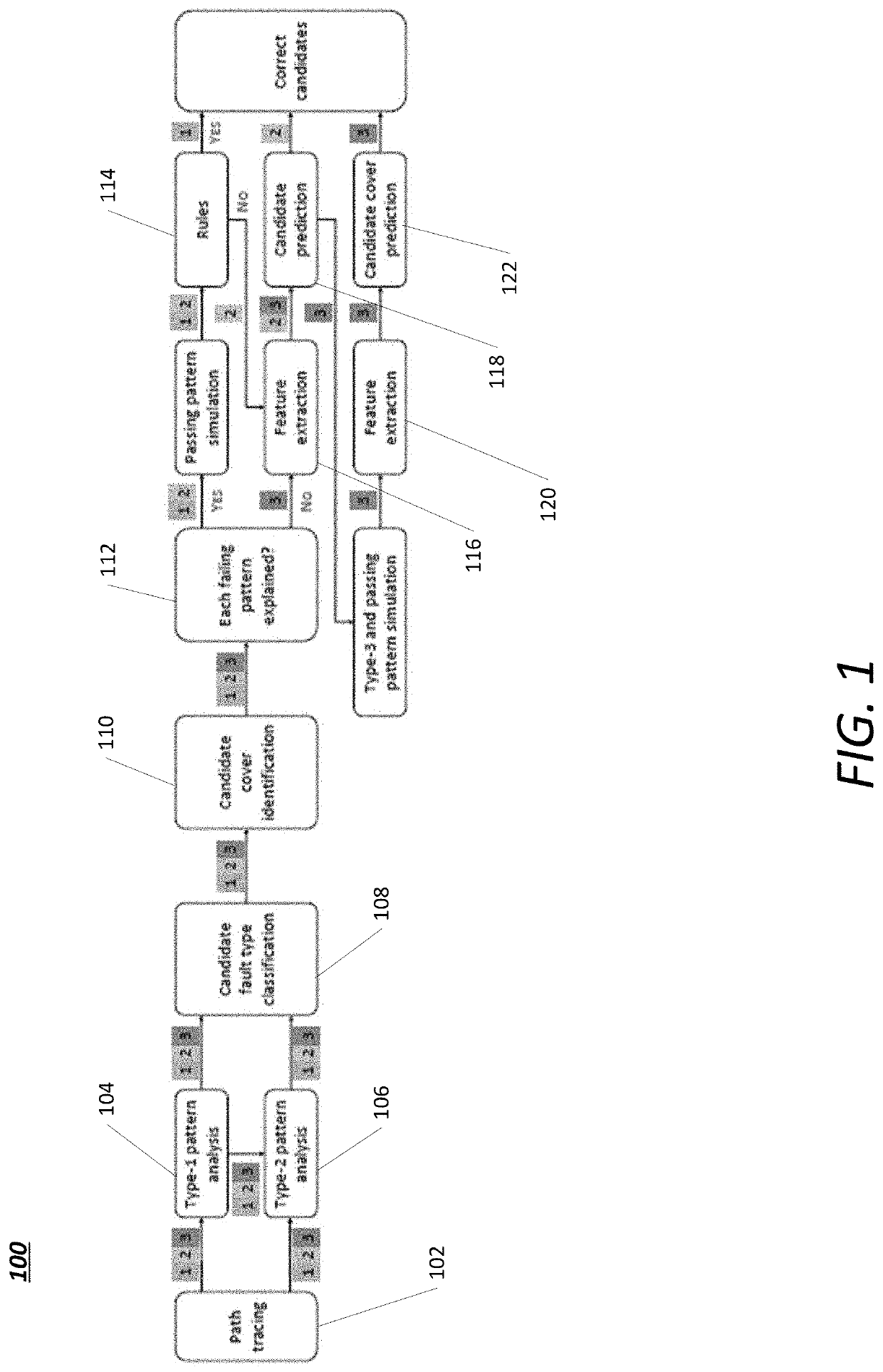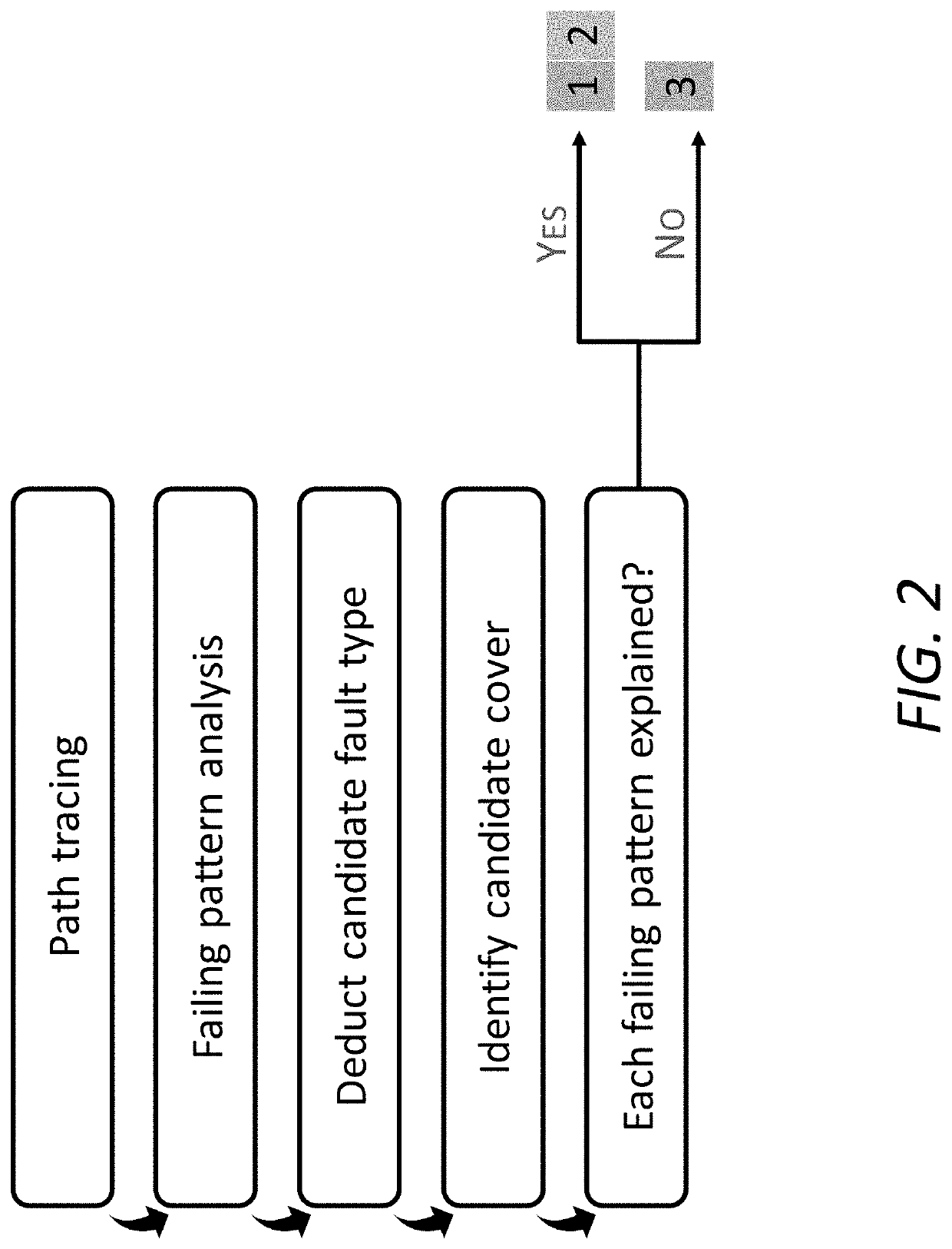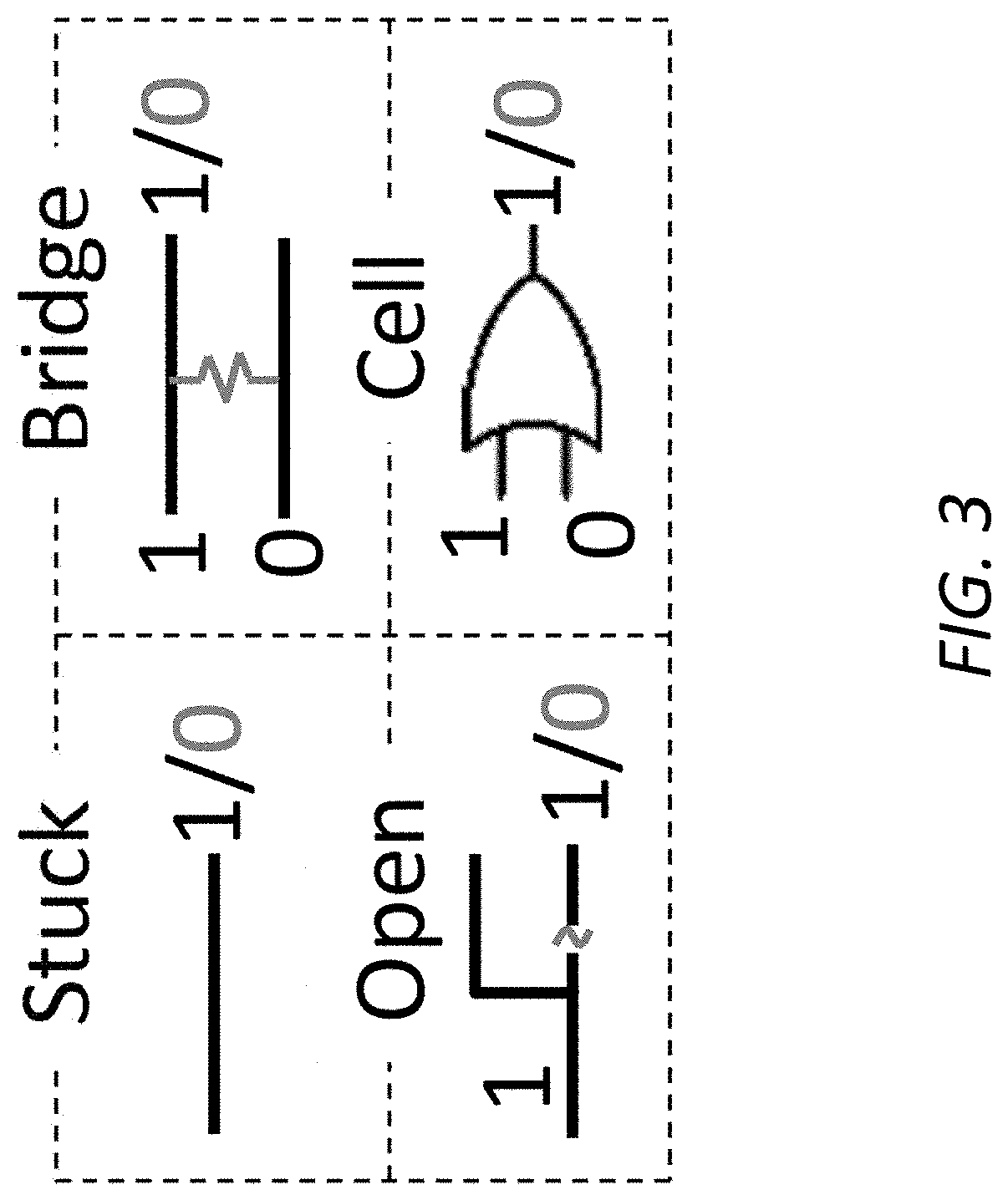Integrated circuit defect diagnosis using machine learning
a machine learning and integrated circuit technology, applied in error detection/correction, instruments, computing models, etc., can solve the problems of increasing the number of manufacturing steps, reducing the effectiveness of finding defects, and reducing the number of actual chips, so as to achieve the effect of effective diagnosis of multiple defects in an integrated circuit and increasing yield
- Summary
- Abstract
- Description
- Claims
- Application Information
AI Technical Summary
Benefits of technology
Problems solved by technology
Method used
Image
Examples
Embodiment Construction
[0035]The method disclosed herein for characterizing multiple defects on a single chip is built on a single-defect diagnosis methodology introduced in U.S. Provisional Patent Ser. No. 62 / 922,401, the contents of which are incorporated herein by reference in their entirety. The single-defect method described in the provisional filing employs the X-fault model to avoid eliminating an actual defect location, and machine learning to identify the best candidate that could represent a defect. The single-defect model achieves superior performance for single-defect diagnosis when compared with prior art state-of-the-art commercial tools. It returns a single correct candidate for 86.6% more fail logs.
[0036]This method disclosed herein describes a single-chip, multiple-defect diagnosis methodology that is built on the single-defect model described in the provisional filing to effectively address the task of characterizing more than one defect. The method addresses the drawbacks of prior work ...
PUM
 Login to View More
Login to View More Abstract
Description
Claims
Application Information
 Login to View More
Login to View More - R&D
- Intellectual Property
- Life Sciences
- Materials
- Tech Scout
- Unparalleled Data Quality
- Higher Quality Content
- 60% Fewer Hallucinations
Browse by: Latest US Patents, China's latest patents, Technical Efficacy Thesaurus, Application Domain, Technology Topic, Popular Technical Reports.
© 2025 PatSnap. All rights reserved.Legal|Privacy policy|Modern Slavery Act Transparency Statement|Sitemap|About US| Contact US: help@patsnap.com



